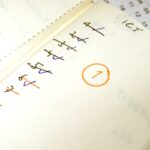How to Overcome the Most Common Mistakes on the ACT

The ACT is a standardized test that plays a crucial role in college admissions. It measures high school students skills in English, math, reading, and science, and provides an overall score that colleges use to evaluate applicants. However, many students struggle with certain types of questions on the test, leading to lower scores than they might otherwise achieve.
In this post, we’ll identify and explain the top 10 most commonly missed questions on the ACT. For each question type, we’ll provide examples of common mistakes and misconceptions that lead to incorrect answers. We’ll also offer step-by-step instructions for how to approach each question type and avoid these pitfalls.
Top 10 Most Commonly Missed Questions on the ACT
The ACT is a key element of the college admissions process, and it’s important to understand how to answer all types of questions on the test. Unfortunately, many students fall into traps and miss questions that they could have answered correctly if not for certain misconceptions or mistakes. In this section, we look at the breakdown subject by subject.
Geometry Problems
Geometry problems are some of the most challenging questions on the ACT for many students. They often involve complex diagrams and require a deep understanding of geometric concepts such as angles, lines, and polygons.
One common mistake students make when answering geometry problems is failing to carefully read and interpret the diagram provided. To avoid this mistake:
Identify all relevant information from the diagram before attempting to solve the problem.
One effective strategy is to identify all relevant information from the diagram before attempting to solve the problem. This involves carefully analyzing the given figures and noting any measurements or relationships that are explicitly stated or can be inferred. By doing so, you can avoid making assumptions or overlooking important details that could lead to incorrect answers.
Additionally, taking the time to thoroughly understand the diagram can make it easier to visualize and manipulate the shapes involved in the problem, making it simpler to arrive at a solution. Therefore, when faced with challenging geometry questions on the ACT, remember to take a step back and carefully evaluate all available information before beginning your calculations.
Use formulas or other tools as needed to find missing measurements or angles.
Geometry problems often require finding missing measurements or angles in order to arrive at a solution. In such cases, it can be helpful to use formulas or other tools to aid in the calculation process. For instance, if you need to find the area of a triangle, you might use the formula A = 1/2 bh, where A represents the area, b represents the base length, and h represents height. Similarly, if you need to find the measure of an angle in a right triangle, you could use the Pythagorean theorem or trigonometric functions like sine, cosine, or tangent.
By having a solid understanding of relevant formulas and tools and how they apply to different types of problems, you can approach geometry questions with greater confidence and accuracy. Therefore, when working on geometry problems that involve missing measurements or angles, don’t hesitate to utilize appropriate formulas or tools as needed to help guide your calculations.
Reading Comprehension Questions
Reading comprehension questions are another area where many students struggle on the ACT. These questions require careful attention to detail and an ability to analyze written passages for meaning.
One common mistake students make when answering reading comprehension questions is failing to fully understand what they’ve read before attempting to answer a question. To avoid this mistake:
Read each passage carefully from beginning to end
To effectively comprehend a passage, it is crucial to read it carefully from start to finish. This ensures that no important information is missed and the reader can fully grasp the intended message of the text.
By taking the time to go through each sentence and paragraph with attention, one can also identify any potential errors or inconsistencies in the writing. Therefore, it is recommended to approach every passage with a patient and focused mindset in order to achieve optimal understanding.
Take notes or highlight important details as you read
When reading any type of material, it can be helpful to take notes or highlight key points as you go along. This allows the reader to easily identify and recall important information later on, without having to reread the entire passage.
By jotting down notes or underlining key details, one can also better organize their thoughts and ideas about the text. Additionally, highlighting important sections can help with summarizing and reviewing the main points of the material. Therefore, incorporating note-taking or highlighting into your reading routine can enhance comprehension and retention of information.
Re-read specific sections as needed when answering individual questions
When answering questions that relate to a specific text, it is important to be thorough and accurate in your responses. One way to achieve this is by re-reading specific sections of the material as needed when answering individual questions. By doing so, you can ensure that your response is based on accurate information and avoid making mistakes or misinterpreting the text.
This approach also allows you to review and reinforce your understanding of the material, which can be especially helpful when studying for exams or writing papers. Therefore, taking the time to re-read relevant sections can improve both comprehension and performance when engaging with written material.
Scientific Reasoning Questions
Scientific reasoning questions require students to analyze scientific data or experiments in order to draw conclusions or make predictions based on evidence.
One common mistake students make when answering scientific reasoning questions is confusing correlation with causation – assuming that just because two things are related means one caused the other without considering other possible factors that might be involved. To avoid this mistake:
Carefully examine all available data before drawing any conclusions
When studying various scientific reasoning-based questions appearing on the ACT, it is important to make sure that all available information is carefully analyzed before any conclusions are made. To ensure the best results, more time should be devoted to this process by taking the time to thoroughly read through all of the provided data.
This can include making sure to read the question itself and any accompanying text multiple times. Once the data is understood, it should be organized in a logical manner that helps to make connections between different pieces of information.
Consider alternative explanations or factors that may be influencing outcomes
In some cases, there may be hidden variables or unknowns that can explain why certain results are occurring. In other scenarios, there may be a complex combination of multiple variables that account for a particular outcome. It is important to consider all possible explanations and factors before coming to any conclusions.
Take the time to research, explore, and analyze the data in a comprehensive manner. Consider external forces like economic or social trends that may be contributing to the issue at hand. Gather data from multiple sources in order to form an accurate picture of what is happening and why.
Use logic and critical thinking skills throughout your analysis process
When tackling ACT Scientific Reasoning questions, it is important to use logic and critical thinking skills in order to successfully analyze the given information. The ability to interpret the data presented, draw connections between the pieces of information, and apply relevant knowledge from prior studies are all essential components of the scientific reasoning process.
Furthermore, it is vital that these skills are used to form a well-informed hypothesis and develop an effective solution. In order to effectively utilize logic and critical thinking skills throughout your analysis process, it is important to consider the following:
• Question the data presented – Are there any inconsistencies or errors in the information provided? How does this affect the accuracy of your conclusion?
• Identify potential causes and effects – What could have caused the data presented? Are there any potential consequences for this cause?
• Analyze alternative solutions – Are there any other possible solutions that should be considered? How is each solution different from one another?
• Utilize prior knowledge – Is there any existing knowledge that can be applied to this specific problem?
• Consider the implications – How will your solution affect the environment, society, or other individuals involved in this scenario?
Algebraic Equations
Algebraic equations can be a major source of difficulty for many students on the ACT. These types of problems often rely heavily on abstract mathematical concepts like variables and functions, which can be challenging to grasp without a solid foundation in algebraic principles.
One common mistake that students make when approaching these problems is failing to isolate the desired variable correctly. This can happen for a variety of reasons, such as adding or subtracting incorrectly or forgetting important steps in the solving process.
To avoid this error, it is critical to simplify both sides of an equation before attempting any operations. By doing so, you can reduce complex expressions into simpler terms and make it easier to see how different parts of the equation relate to one another. Additionally, it is important to perform operations carefully and methodically, taking one step at a time until you have fully isolated your desired variable.
After arriving at a solution, it is also essential to check your work by plugging your answer back into the original equation if possible. This step helps ensure that your answer is correct and that you did not make any mistakes along the way.
By following these guidelines and practicing regularly with algebraic equations, you can build confidence and improve your ability to solve even the most complex problems in the ACT math section. With persistence and dedication, anyone can develop strong algebraic skills and achieve success on test day!
Grammar Rules
Grammar rules can be a source of confusion and frustration for many people, especially when it comes to the many exceptions that exist depending on context and tone within sentences. This complexity can make it difficult to apply rules correctly, leading to errors in writing or communication.
One common mistake that students make when trying to apply grammar rules is not paying close enough attention to context clues within sentences. Without considering the specific tone or meaning being conveyed, it can be easy to misinterpret certain words or phrases and make errors as a result.
To avoid this issue, it is important to read each sentence carefully and thoroughly before attempting to apply any grammar rules. Look for words or phrases that indicate tone, such as “however,” “in addition,” or “nevertheless.” These indicators can help you better understand the meaning behind the sentence and choose the correct grammar rule to apply.
Another common area where errors occur is subject-verb agreement. This refers to ensuring that the subject of a sentence agrees with its corresponding verb in terms of tense and number. To avoid subject-verb agreement mistakes, always double-check your work after applying any grammar rules.
By taking these steps and practicing regularly with different types of sentences, you can develop a stronger understanding of grammar rules and improve your ability to apply them accurately in writing and communication. With patience and persistence, anyone can become proficient in using proper grammar!
Trigonometry Problems
Trigonometry problems can be a daunting challenge for many test takers, as they often require a deep understanding of complex formulas and concepts. Unlike other areas of math that rely more heavily on conceptual understanding, trigonometry requires a significant amount of memorization in order to perform well.
One common mistake that test takers make when approaching trigonometry problems is using the wrong formula due to confusion between the three main trigonometric functions: sine, cosine, and tangent. This error can arise from a lack of familiarity with these functions or from incorrect memorization of their corresponding formulas.
To avoid this mistake, it is essential to practice regularly with trigonometric identities until they become second nature. By committing key formulas and identities to memory, you can quickly identify which formula to use in any given situation and avoid confusion between different functions.
In addition, it is important to have a solid understanding of basic principles underlying trigonometry, such as the Pythagorean theorem and special right triangles. These concepts provide a foundation for more complex problem-solving and can help you better understand how different formulas relate to one another.
Finally, practicing identifying right triangles can also improve your ability to solve trigonometric problems. By recognizing when a triangle is a right triangle – meaning it has one angle that measures 90 degrees – you can apply specific formulas related to sine, cosine, and tangent that are unique to this type of triangle.
By following these guidelines and putting in consistent effort with practice problems, anyone can develop strong skills in trigonometry and excel on standardized tests like the ACT or SAT. With dedication and persistence, even the most challenging problems can be tackled successfully!
Probability/Statistics
Probability and statistics problems are a common fixture in the math section of standardized tests like the ACT, and they require a strong understanding of key concepts and formulas. One area that test takers often struggle with is a conditional probability, which refers to the likelihood of one event occurring given that another event has already occurred.
One common mistake made by test takers when dealing with conditional probability is assuming that events are independent even though one event affects the outcome of the other. This can lead to incorrect calculations and ultimately result in lower scores on the test.
To avoid this pitfall, it is important to first identify whether events are mutually exclusive or dependent. When two events are mutually exclusive, they cannot occur simultaneously – for example, flipping a coin can result in either heads or tails but not both. Dependent events, on the other hand, have outcomes that rely on one another – such as drawing multiple colored balls from a bag without replacement.
Once you have identified whether events are mutually exclusive or dependent, it can be helpful to draw tree diagrams showing all possible outcomes. This visual representation can clarify how different events relate to one another and help you better understand how to calculate probabilities accordingly.
Finally, calculating probabilities accurately requires attention to detail and careful application of formulas. Depending on the specific problem at hand, you may need to use formulas related to permutations, combinations, or other statistical concepts.
By following these guidelines and regularly practicing with probability and statistics problems, anyone can develop strong skills in this area and perform well on standardized tests like the ACT. With persistence and dedication, even complex problems can be solved successfully!
Vocabulary-In-Context Questions
Vocabulary-in-context (VIC) questions are a challenging aspect of standardized tests that require readers to not only define words but also understand them within specific contexts. These questions can be particularly difficult since they often rely on subtle contextual clues that may be easy to overlook.
One common issue encountered by readers when tackling VICs is overlooking contextual clues provided within sentences. This can lead to confusion and incorrect answers, ultimately resulting in lower scores on the test.
To overcome this challenge, it is important to pay close attention while reading each sentence and identify any words or phrases that may provide context for the meaning of unfamiliar words. For example, a sentence that mentions “the aroma of freshly baked bread” may provide context for the definition of the word “aroma”.
In addition, studying unfamiliar words beforehand and looking up their definitions can help prepare you for VIC questions on the test. By building your vocabulary and becoming familiar with a wider range of words, you will be better equipped to understand their meanings within different contexts.
Finally, analyzing word roots, prefixes, and suffixes can also be helpful when approaching VIC questions. By recognizing common word elements and how they affect meaning, you can more easily infer the definitions of unfamiliar words based on their structure.
By following these guidelines and practicing regularly with VIC questions, anyone can develop strong skills in understanding vocabulary within different contexts. With persistence and dedication, even the most challenging questions can be answered successfully!
Data Interpretation
Data interpretation-based problems are a critical aspect of many standardized tests, requiring test takers to interpret charts, graphs, and data tables quickly and accurately in order to answer questions. However, one common mistake made by test takers is failing to read and interpret all available data before attempting to answer a question.
To avoid this mistake, it is important to examine all available data carefully before answering any questions. Take the time to read through the chart or table thoroughly, paying attention to any labels or legends that may provide additional context for the data being presented. Look for trends or patterns that may be relevant to the question being asked, and consider any outliers or anomalies that may affect your analysis.
In addition to careful examination of data, it can also be helpful to use logic and critical thinking skills throughout your analysis process. Consider whether there are any underlying factors that may be affecting the data being presented, and think critically about how different variables may be related. By approaching data interpretation-based problems with a thoughtful and analytical mindset, you will be better equipped to identify key insights and draw accurate conclusions.
Finally, practice is essential when it comes to developing strong skills in interpreting charts and tables. Regularly working with sample problems from past tests can help you become more comfortable with different types of data presentation and develop strategies for identifying relevant information quickly.
By following these guidelines and practicing regularly with data interpretation-based problems, anyone can develop strong skills in this area and perform well on standardized tests. With persistence and dedication, even complex charts or tables can be interpreted successfully!
Logical Reasoning Questions
Logical reasoning questions are a crucial component of many standardized tests, requiring students to apply critical thinking skills and use deductive reasoning in order to determine the correct answer. However, one common mistake that students make when answering these types of questions is failing to consider all possible scenarios or assumptions that might be relevant.
To avoid this mistake, it is important to carefully examine all available information before drawing any conclusions. Take the time to read through the question and any provided statements or data thoroughly, paying attention to any details or nuances that may be relevant. Consider whether there are any underlying factors that may be affecting the situation being described, and think critically about how different variables may be related.
In addition to careful examination of information, it can also be helpful to consider alternative explanations or factors that may be influencing outcomes. Don’t simply accept the most obvious answer – instead, take a step back and consider whether there are other possibilities that might explain the situation at hand. By considering multiple scenarios and weighing their likelihood based on available evidence, you will be better equipped to identify potential solutions.
Finally, using logic and critical thinking skills throughout your analysis process can help you arrive at accurate conclusions more quickly and efficiently. By breaking down complex problems into smaller components and analyzing each piece individually, you can more easily identify patterns or trends that may be relevant to determining the correct answer.
By following these guidelines and practicing regularly with logical reasoning questions, anyone can develop strong skills in this area and perform well on standardized tests. With persistence and dedication, even challenging questions can be answered successfully!
Power Tips for Before, During, and After the ACT Test
The ACT is an important standardized test that can greatly impact a student’s college admissions prospects. To perform their best on test day, students need to prepare well in advance and be mindful of certain key strategies and tips. In this post, we’ll offer some power tips for ACT test day, covering what students should do before, during, and after the test to maximize their chances of success.
Before the Test
- Get a good night’s sleep: One of the most important things you can do before the ACT is to make sure you get a good night’s sleep the night before the test. Aim for at least eight hours of restful sleep to help you feel alert and focused on test day.
- Eat a healthy breakfast: Eating a nutritious breakfast is also essential for performing well on the ACT. Choose foods that are high in protein, fiber, and complex carbohydrates to provide sustained energy throughout the morning.
- Review your notes and study materials: While it’s not advisable to cram the night before the test, you should take some time to review your notes and study materials to refresh your memory and build your confidence.
- Check your test-taking materials: Before leaving for the test, make sure you have all the necessary test-taking materials, such as your admission ticket, identification, calculator, and pencils. Double-check that your calculator is in good working order and that you have extra batteries.
During the Test
- Manage your time wisely: Time management is crucial on the ACT, so be sure to pace yourself appropriately throughout the test. Try to allocate roughly equal amounts of time to each section and aim to finish each section with a few minutes to spare.
- Read the instructions carefully: Before beginning each section, take a moment to read the instructions carefully and understand what is expected of you. Pay attention to any specific rules or guidelines, such as whether you’re allowed to use a calculator or whether you need to show your work.
- Answer the easy questions first: When you first begin each section, scan through the questions and answer the ones that seem easiest or most straightforward. This can help build your confidence and momentum, and ensure that you don’t get bogged down on more difficult questions.
- Stay calm and focused: Test-taking can be stressful, but it’s important to stay calm and focused throughout the ACT. Take deep breaths, stretch your muscles, and remind yourself that you’ve prepared well and are capable of doing your best.
After the Test
- Don’t dwell on mistakes: After the test, it’s natural to second-guess yourself or dwell on mistakes you may have made. However, it’s important to avoid ruminating on the test and instead focus on what you can do to improve your scores next time.
- Celebrate your accomplishments: Regardless of how you feel you did on the test, take a moment to celebrate your accomplishments and hard work. Congratulate yourself for showing up and giving it your best effort.
- Review your scores and consider retaking the test: When your scores come back, review them carefully and consider whether you need to retake the test to improve your chances of college admissions. If you do decide to retake the ACT, use your experience from the first test to identify areas where you need to improve and create a plan for preparing more effectively.
- Reward yourself: Finally, reward yourself for all your hard work and effort in preparing for and taking the ACT. Treat yourself to a favorite meal, activity, or hobby as a way of celebrating your achievements and recharging your batteries for the next challenge ahead.
Following these power tips for ACT test day, students can approach the test with confidence, focus, and the best chance of success. Remember to prepare well in advance, manage your time effectively
Prepare for the Most Commonly Missed ACT Questions
The ACT can be a challenging test, even for students who are well-prepared and confident in their abilities. By understanding the most commonly missed types of questions on the test, however, you can better prepare yourself for success.
Remember, whether you’re struggling with geometry problems, reading comprehension questions, scientific reasoning challenges, or any other type of ACT question, there are strategies you can use to avoid common mistakes and improve your accuracy on test day.
We hope this guide has been helpful in identifying these common pitfalls and providing actionable tips for how to overcome them. Good luck with your next ACT!
[Featured Image by Flickr Creative Commons]








